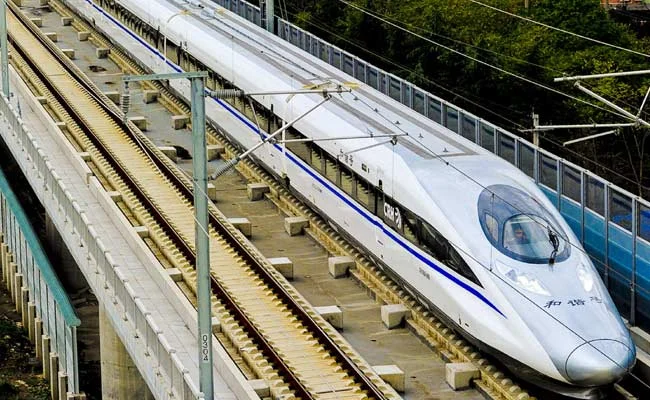 Image Source: Urban Acres
Image Source: Urban Acres
India's ages-old dream of bullet trains is coming into reality at lightning speed, as the Mumbai-Ahmedabad Bullet Train Project sees a chain of historic moments in 2025. As Japanese Shinkansen trains are put to trial, the first bullet train station at Surat almost complete, and Indian prototype manufacturing about to start, the country is looking forward to transforming its rail network.
Shinkansen Trials Herald a Giant Leap
In a historic breakthrough, Japan has started trial operations of Shinkansen bullet trains for India's Mumbai-Ahmedabad High-Speed Rail (MAHSR) corridor. Two train sets, one each from the E5 and E3 series, are being put to the test for performance, durability, and conformity to Indian conditions. The trains, which can operate at speeds of up to 320 km/h, will be shipped to India in early 2026 to undergo additional intensive testing on local tracks. The information collected will also help in the development of India's own E10 series trains under the initiative of "Make in India."
Surat Station to Get Close to Completion, Full Service Due by 2029
India's first bullet train station at Surat in Gujarat is nearing completion, with test runs to begin next year. The Mumbai-Ahmedabad corridor already has 300 km of viaducts, including key river bridges and sophisticated track-laying on the pattern of Japan. The entire 508-km high-speed rail line should become functional by 2029, cutting the travel time between Mumbai and Ahmedabad from 7-8 hours to mere 2-3 hours.
Domestic Manufacturing: BEML to Construct First Indian Bullet Train Prototype
Bharat Earth Movers Limited (BEML), a state-owned public sector entity from Bengaluru, will start producing India's first bullet train prototype in September 2025. The eight-coach trainsets capable of operating at up to 280 km/h (with average operational speeds of around 249 km/h) will be completed and tested by December 2026. The project is one of several efforts aimed at localizing high-speed rail technology, cutting costs, and generating new employment opportunities. The project is backed by global experts to ensure compliance with rigorous safety and quality requirements.
Important Features and Safety Features
-
Time-Saving: The bullet train will reduce the travel time between Ahmedabad and Mumbai to under three hours, even with stops.
-
Eco-Friendly: Excellent fuel efficiency and the ability to lower road congestion, air, and noise pollution.
-
Economic Spur: The project will create thousands of jobs, spur local economies, and increase real estate on the corridor.
-
Enhanced Safety: Features earthquake-resistant technology, cutting-edge signaling, and strong inspection systems to provide passenger safety.
-
Make in India: Technology transfer from Japan will enable India to develop indigenous next-generation high-speed trains, strengthening domestic manufacturing capacity.
The Road Ahead
Through foresight Indo-Japanese partnership, indigenous production, and state-of-the-art infrastructure in the finishing stages, India's bullet train project will revolutionize intercity travel and raise the bar in speed, safety, and eco-friendliness. With the country looking forward to its maiden high-speed rail ride, the vision of a modern, integrated India is within reach.
Sources: Financial Express, Times of India, OneIndia, Keystone Real Estate Advisory, Swarajya, Financial Express, India Today, BYJU'S
Advertisement
Advertisement





